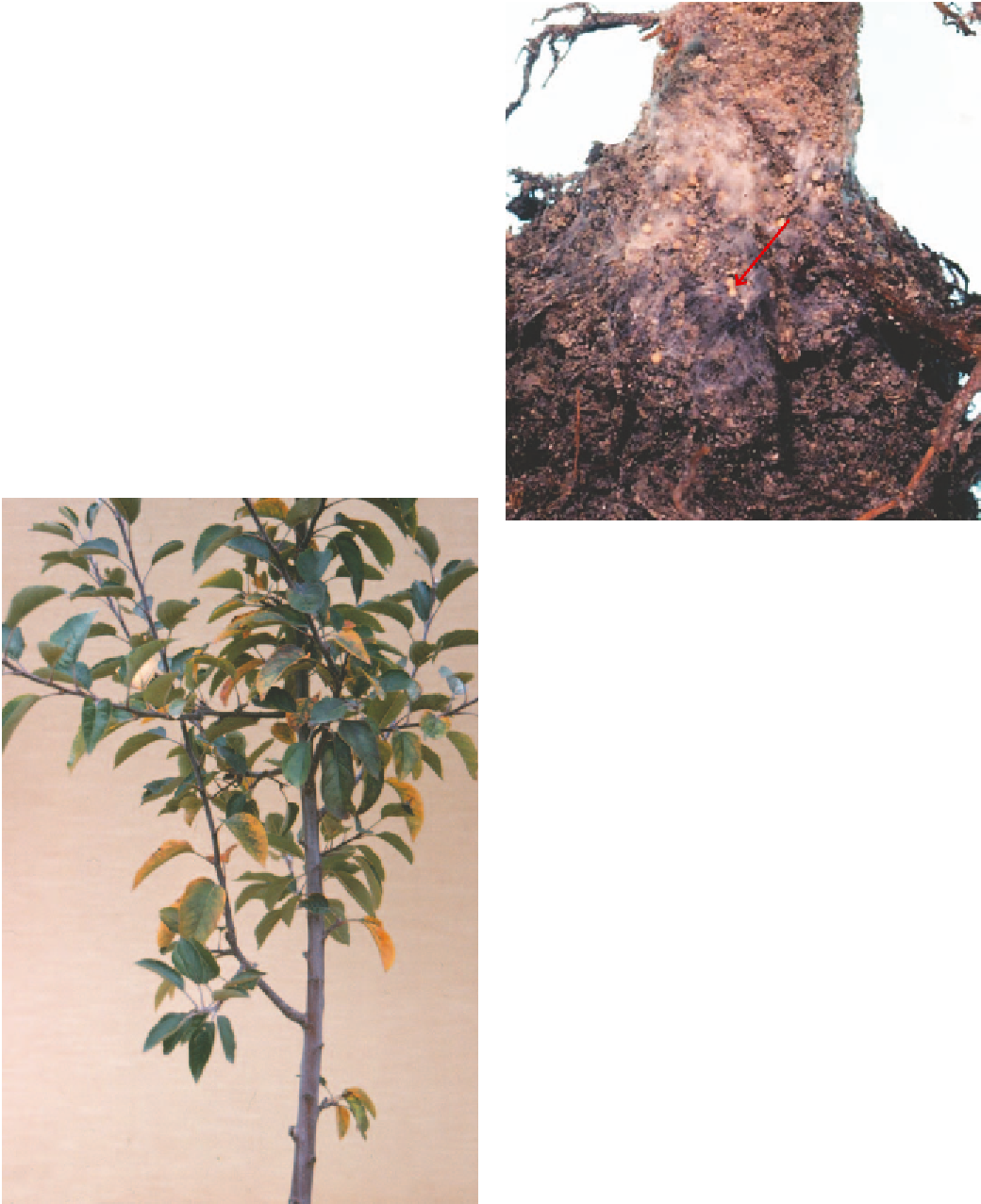Agriculture Reference
In-Depth Information
Importance
This is a late summer disease of minor importance in well-
managed orchards. The disease may be a problem in fruit
ripening during cool, wet weather.
Management
•
Prune out diseased twigs during winter and remove
diseased fruit from the orchard.
Spray with recommended fungicides.
•
SCLEROTIUM COLLAR ROT OF APPLE
■
Cause
The fungus
Sclerotium rolfsii
.
Symptoms
Mature leaves of affected trees turn yellow or reddish or
greyish-purple in colour and wilt, eventually becoming
Fig 3.32 Base of a tree affected by collar rot. Sclerotia appear as
small, light-coloured spheres.
brown and papery. Examination of the trunk at or just
below ground level shows a rot of the bark and wood often
completely encircling the stem. White wefts of fungal
growth may cover the affected area when the soil is moist.
The most characteristic symptom is the production of
small, spherical, resting bodies (sclerotia) of the fungus on
the affected area or in the nearby soil.
The above-ground symptoms can appear to be similar
to other pathogenic soil-borne pathogens including white
root rot (
Rosellinia necatrix
) and
Phytophthora cactorum
.
Source of infection and spread
The fungus is a common soil inhabitant that attacks a
large number of crop plants and weeds. It is usually more
serious in newly planted orchards where the ground was
previously used for vegetables for a sustained period.
Sclerotia are the principal means of long-term survival in
the soil.
Importance
Collar rot is a widespread problem, especially where apples
are planted in old vegetable land.
Management
•
Ground recently planted with vegetables or apples
should undergo at least 12 months of rotation with
Fig 3.31 Sclerotium collar rot in young apple tree showing leaf
discolouration.












